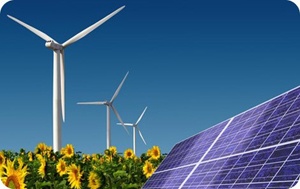
The last month of 2014, saw world leaders gather in Lima, Peru, in what was supposed to be a fight for the environment. Under the United Nations banner, high powered government delegates from 192 countries tried to reach an agreement on how to tackle the crisis of climate change. This meeting was the precursor to the mother of all meetings, to be held in Paris in 2015 – where world leaders, Presidents and Prime Ministers, will gather for the great big climate summit. The summit will be held to address the contentious issue on how the world needs to contain rising temperatures and help prevent catastrophic climate change.
The Lima conference embroiled in all kinds of climate politics, got linked to development rights, ended with what is now known as the Lima Call to Action.
Low carbon growth

An immediate fall out of the Lima meeting and the upcoming Paris climate summit is likely to find its way into the first trend of 2015 – a move towards a low carbon growth.
The need by governments, businesses and individuals to kick the carbon habit will find favoured currency. As developing countries grapple to meet their energy demands, there is every possibility that renewable could get a bigger share of the energy pie giving way to a low cost of production for renewable energy.
The likely high of 2015 will therefore be the move to low carbon emissions.
Water will matter
The Global Risks 2014 report published by the World Economic Forum, identifies water as one of the top 3 risks for governments and business. The IPCC in its latest report says that large parts of the global population will "experience water scarcity and be affected by major river floods"
How governments, businesses and local civic bodies manage water will determine the future of several countries and industries. Since 2010, there has been a growing awareness on environmental risks, such as climate change, extreme weather events and water scarcity. The Russian drought of 2010 was the first wake up call. This year California rudely fired up US government to change the way they approach water. The cost of water is likely to increase, tariffs will be higher and there will be stricter regulations on water management - from waste water usage, to recycling and rain water harvesting.
Globally there will be trend in recognising and valuing our wetlands, forests and their role in acting as sponges for water and there will be renewed thinking of the economics of water and ecosystem services.
From governments, to countries, to industries, to locals, to individuals there will be a need to get more judicious about water.
Food - the where and how
Where does it come from and how it is being grown will be asked by ordinary citizens on food and agricultural produce. Given the growing awareness on the impacts of mass produced factory farmed food on health and environment, more questions and pressure is being exerted by citizens on their governments and food companies for labelling and for responsible food production. All actors in the food chain, from cultivators, to producers, to regulators and to consumers will start making more responsible and sustainable choices.
The move will be towards locally grown and produced food.
Gender and Sexuality – the good and the bad
If Apple's Tim Cook became a hero in 2014 for "coming out", Microsoft CEO Satya Nadella got it all wrong. By dismissing the gender gap and blaming karma for the difference in salaries between men and women Nadella fell a couple of notches. He quickly had to retract what he said and apologise profusely. Clearly, gender remains a largely unresolved issue but not for long.
At the workplace, both these will trend in 2015 - diversity and inclusivity. Business will have targets for hiring more women specially at senior positions on a more equal footing, but also targets for a more inclusive and diverse workforce where discrimination on gender, sexuality have no role.
If these trends emerge on 2015, there is much to cheer in the New Year.


